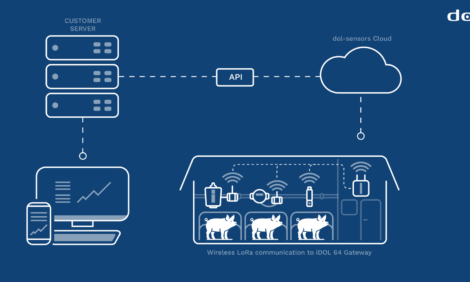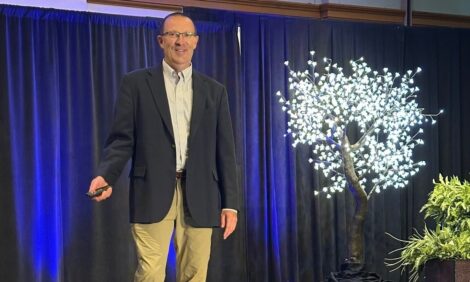



Probing Genetic Control of Swine Responses to PRRS Virus Infection
The PRRS Host Genetics Consortium (PHGC) project will enable researchers to discover and verify important genotypes and phenotypes that predict resistance/susceptibility to porcine reproductive and respiratory syndrome (PRRS) virus infection, say US researchers involved in the project.Understanding the role of host genetics in resistance to porcine reproductive and respiratory syndrome virus (PRRSV) infection, and the effects of PRRS on pig health and related growth, are goals of the PRRS Host Genetics Consortium (PHGC), explained Joan K. Lunney of the Animal Parasitic Diseases Laboratory, ARS, USDA in Beltsville, Maryland and co-authors at the State Universities of Michigan, Iowa and Kansas in a paper published in BMC Proceedings.
They explained that the project uses a nursery pig model to assess pig resistance/susceptibility to primary PRRSV infection. To date, six groups of 200 crossbred pigs from high health farms were donated by commercial sources. After acclimatisation, the pigs were infected with PRRSV in a biosecure facility and followed for 42 days post infection. Blood samples were collected at 0, 4, 7, 10, 14, 21, 28, 35 and 42 days post infection for serum and whole blood RNA gene expression analyses; weekly weights were recorded for growth traits. All data have been entered into the PHGC relational database. Genomic DNAs from all PHGC1-6 pigs were prepared and genotyped with the Porcine SNP60 SNPchip.
Results have affirmed that all challenged pigs become PRRSV-infected with peak viraemia being observed between four and 21 days post infection. Multivariate statistical analyses of viral load and weight data have identified PHGC pigs in different virus/weight categories.
Sera are now being compared for factors involved in recovery from infection, including speed of response and levels of immune cytokines. Genome-wide association studies (GWAS) are underway to identify genes and chromosomal locations that identify PRRS resistant/susceptible pigs and pigs able to maintain growth while infected with PRRSV.
Overall, concluded Lunney and co-authors, the PHGC project will enable researchers to discover and verify important genotypes and phenotypes that predict resistance/susceptibility to PRRSV infection. The availability of PHGC samples provides a unique opportunity to continue to develop deeper phenotypes on every PRRSV-infected pig, they added.
Reference
Lunney J.K., J.P. Steibel, J.M. Reecy, E. Fritz, M.F. Rothschild, M. Kerrigan, B. Trible and R.R.R. Rowland 2011. Probing genetic control of swine responses to PRRSV infection: current progress of the PRRS host genetics consortium. BMC Proceedings, 5(Suppl.4):S30 doi:10.1186/1753-6561-5-S4-S30
Further Reading
| - | You can view the full report by clicking here. |
Further Reading
| |
- | Find out more information on porcine reproductive respiratory syndrome (PRRS) by clicking here. |
October 2011






